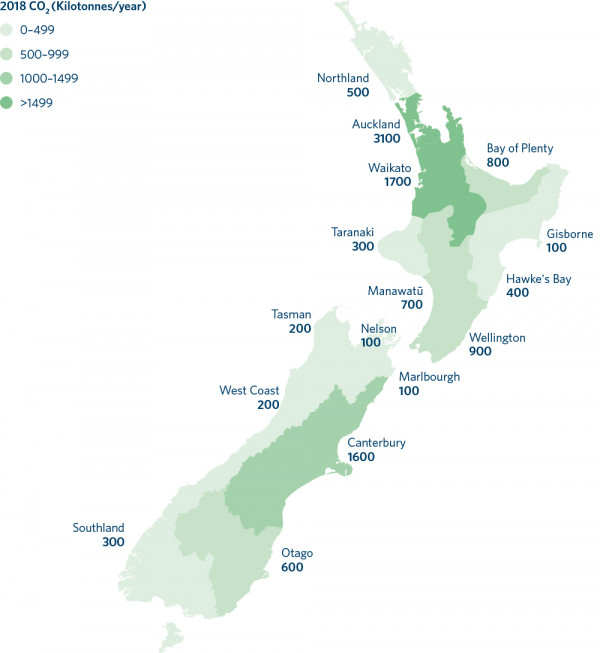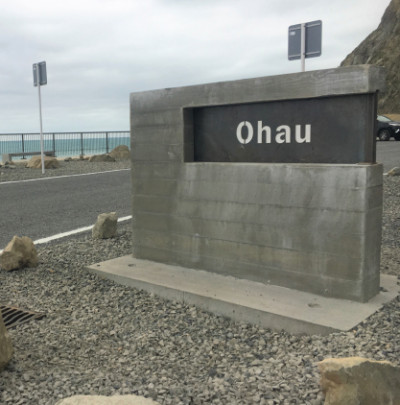Transport accounts for 18 percent of New Zealand’s greenhouse gas emissions, 90 percent of which arise from road transport. These emissions must be significantly reduced if the government is to meet its obligations under the Paris Agreement to reduce greenhouse gas emissions by 2030. Other air emissions play a role in shortening the lives of over 250 people every year, and noise pollution adversely effects people living near busy transport corridors and hubs.
The transport system is also experiencing increasingly frequent and severe unplanned disruptions due to a combination of climate change, increasing traffic volumes and incidents such as crashes. Some ageing infrastructure was not designed to manage current demand and is becoming less robust. Reducing risk and preparing, responding to and recovering from disruption requires a coordinated response, so we need a better understanding of and policies for different types of risks, disruption impacts and community tolerances.
This year, we developed the Transport Agency Sustainability Action Plan. Development of this plan and a prioritised work programme is the first step in a long-term commitment to significantly reducing the adverse impacts of the land transport system on people, the environment and the climate and significantly improving public health.
Significant parts of the work programme are under way. We are changing our investment decision-making approach to facilitate investment in and planning for long-term sustainable outcomes such as lower emissions, improved public health and less environmental harm. An emissions reduction focus is also embedded in the national mode shift plan.

Figure 3: Carbon dioxide (kilotonnes per year), 2018
 The road network emitted 11,500 kilotonnes of carbon dioxide in 2018. This was an increase from 10,800 kilotonnes in both 2016 and 2017. The increase has come primarily from light petrol- and diesel-powered vehicles. Our action plan has a strong focus on reducing emissions from the land transport network.
The road network emitted 11,500 kilotonnes of carbon dioxide in 2018. This was an increase from 10,800 kilotonnes in both 2016 and 2017. The increase has come primarily from light petrol- and diesel-powered vehicles. Our action plan has a strong focus on reducing emissions from the land transport network.
This year, we also established baselines for our greenhouse gas emissions from staff travel and our fleet vehicles. This will allow us to monitor our desired reduction in these emissions and directly aligns with our broader leadership role in the public sector to reduce sector emissions from staff travel and vehicle use.
The National Land Transport Fund fully funds some infrastructure delivery and network management contracts. We are developing and testing three environmental indicators to monitor the environmental impacts of the work under these contracts. The indicators focus on biodiversity, resource efficiency and environmental management performance. We expect to start incorporating these indicators into Network Outcomes Contracts and capital projects from 2019/20.
We are working to improve the resilience of the land transport system to climate change–related impacts, increasing traffic volumes, and incidents such as crashes, so communities can recover more quickly from disruption.
This year, we set a baseline level of stakeholder and partner confidence (2.3 out of 5) that the transport system is appropriately adapting to climate change. Our stakeholders and partners told us we need to be clearer about the change in direction of system-wide responses to climate change, remove institutional barriers to adapting to climate change, increase visibility of climate change initiatives and improve their implementation.
The Resilience National Strategic Case was endorsed in November 2018. The next step, a programme business case, will investigate and prioritise potential resilience interventions and develop a programme of preferred activities to achieve the resilience outcomes we want to achieve for New Zealand. This will include enhancing New Zealand’s capacity to cope with unplanned disruptive events, thereby supporting the wellbeing and prosperity of all New Zealanders.
Working with our partners to build resilience capability and resources has been another focus this year. We ran Coordinated Incident Management System training with our and our partners’ staff to lift capacity and capability in emergency management response and developed and updated resilience resources for staff, consultants and partners. In addition, we are developing pilots with local government and other partners to build a shared understanding of risk tolerance among communities and business and to improve capability and self-sufficiency for managing during disruptive events.

 As part of the Kaikōura earthquake response, North Canterbury Transport Infrastructure Recovery restored and increased the resilience of State Highway 1 and the Main North Rail Line by delivering $218 million of recovery and resilience works. These works continue to reduce the number closures on the road and rail line, building community confidence and restoring economic sustainability in the freight sector.
As part of the Kaikōura earthquake response, North Canterbury Transport Infrastructure Recovery restored and increased the resilience of State Highway 1 and the Main North Rail Line by delivering $218 million of recovery and resilience works. These works continue to reduce the number closures on the road and rail line, building community confidence and restoring economic sustainability in the freight sector.
As well as restoring the transport corridor, we continued to improve safety, access and amenities across State Highway 1 through Kaikōura, benefitting tourism, freight and the travelling public. This year, we opened a safe stopping and seal-viewing area at Ohau Point, increased the size of the road tunnel so all classes of road freight can use this route, and implemented safe speeds and safety improvements along the route.
North Canterbury Transport Infrastructure Recovery is an alliance partnership between the Transport Agency, KiwiRail, Downer, Fulton Hogan, HEB Construction and Higgins. The government set it up in late December 2016 to restore earthquake-damaged infrastructure between Picton and Christchurch.